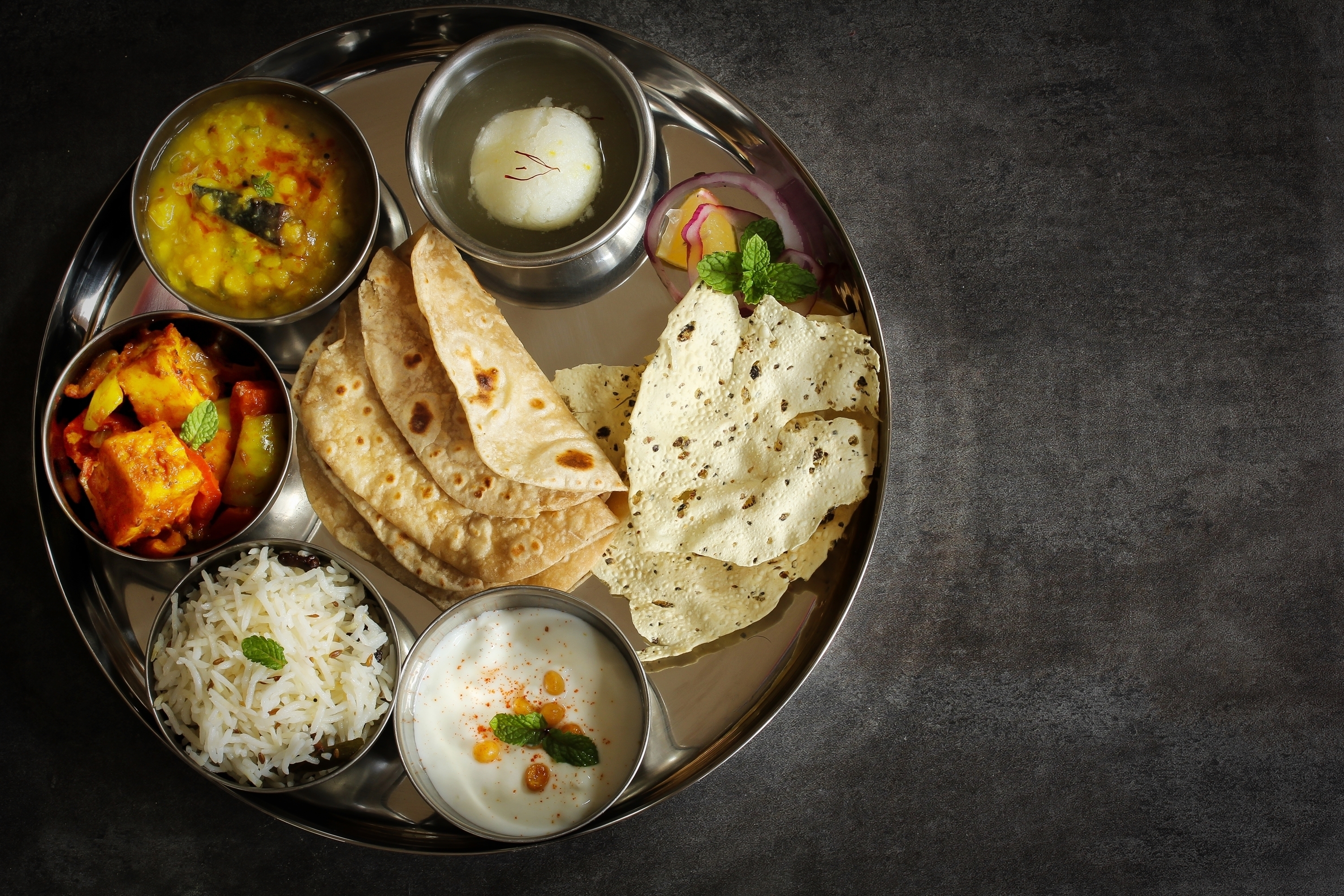Papadum is derived from the Sanskrit word parpaṭa (पर्पट), which means a flattened disc. Some of the common names of Papad in various regions of India are Papad, appadam, papar, pampad, happala, poppadam, poppadom, appalam, pappadam, puppodum, and pappadum.

Papad is a versatile food that is enjoyed in many different ways in India and other parts of the world. It is typically served as an accompaniment to meals and is often eaten with rice, curry, or other dishes. It is also commonly served as a snack or appetizer, either on its own or with chutney or other dipping sauces.
In India, papad is made in many different regional variations, with different flours, spices, and ingredients used depending on the region. For example, in the southern Indian state of Tamil Nadu, papad is made from black gram flour and is flavored with cumin seeds and chili powder. In the western state of Rajasthan, papad is made from a mixture of lentil and chickpea flours and is seasoned with spices such as turmeric, cumin, and asafoetida.

Papad is also popular in other countries, such as Nepal, Pakistan, Sri Lanka, and Bangladesh. In these countries, papad is often made with different ingredients and spices and is known by different names, such as poppadom, appalam, and pappadam.
Overall, papad is a beloved food that has a long and rich history in the Indian subcontinent and beyond. Whether enjoyed as a snack or as a part of a meal, papad is a delicious and versatile food that is sure to delight anyone who tries it.

Papad, also known as papadum, is a thin, crispy Indian wafer made from lentil, chickpea, or rice flour that is typically served as an accompaniment to meals or as a snack. The exact origin of the papad is not clear, but it is believed to have originated in the Indian subcontinent.
According to some sources, the papad was first made by the ancient Indus Valley civilization over 5,000 years ago. The people of this civilization used to make a flatbread called "paryushan" using lentil flour. This flatbread was then fried and eaten as a snack.
Another theory suggests that the papad was introduced to India by the Mughals, who ruled India from the early 16th century to the mid-19th century. The Mughals brought with them a dish called "papadum" from Central Asia, which was made from ground lentils or chickpeas.
Over time, papad evolved and became a popular food item across India and other parts of the world. Today, papad is made in a variety of flavors and is enjoyed by millions of people worldwide.

The most popular or common type of Papad is made from Urad Dal. But there are many types of that are made in India. These include Moong Dal Papad. Bikaner is famous for Moong Dal Papad. Potato Papads are manufactured in Banaras. In the South, Apalam is manufactured on a large scale. Gujarat and Maharashtra are also very big Manufacturers of Papad. Mumbai is the home of Lijjat Papad. The Lijjat Papad Company, Shri Mahila Griha Udyog Lijjat Papad, is located in Mumbai. Papads are being made by many Women's Self Help Groups, so Papads can be considered a symbol of Women's Empowerment in India. As Papad making is mostly a manual process, Papad making requires a very small capital investment, so it is easy for even underprivileged women to make Papads. But it requires too much hard work. That's why we have a phrase for Difficult tasks 'Bahut Papad Belne Padenge'. Sindhipapad.online salutes all the women involved in Papad and other Home Based Business.
